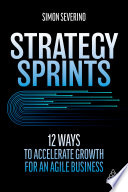

Strategy Sprints introduces a systematic approach to tackling business challenges through focused, time-bound sprints. Each sprint lasts two weeks and is designed to deliver concrete results in a short timeframe. This method allows teams to concentrate on specific objectives, ensuring that they do not get bogged down by the usual day-to-day operations. By breaking down larger goals into manageable tasks, the Sprint Methodology encourages agility and adaptability, enabling businesses to pivot quickly in response to market changes or internal challenges. This idea emphasizes the importance of structure in achieving strategic goals, advocating for a disciplined yet flexible approach to problem-solving.
Continue readingA central tenet of the Strategy Sprints framework is the identification and focus on key performance indicators (KPIs) that matter most to the business. This idea stresses that not all metrics are created equal; instead, businesses should hone in on a select few that directly correlate with their strategic objectives. By doing so, teams can avoid the trap of data overload, which often leads to confusion and inaction. The book encourages leaders to establish a clear understanding of what success looks like and to regularly track these metrics throughout the sprint process. This focus on KPIs helps ensure that efforts are aligned with the overall business strategy and that progress can be measured effectively.
Continue readingStrategy Sprints promotes a customer-centric mindset, arguing that understanding customer needs and pain points is crucial for driving business success. By incorporating customer feedback into the sprint process, businesses can ensure that their products and services are tailored to meet actual market demands. This idea encourages teams to engage with customers actively, whether through surveys, interviews, or usability testing, to gather insights that can inform their strategic decisions. By prioritizing the customer experience, businesses can foster loyalty and enhance their value proposition, ultimately leading to increased sales and market share.
Continue readingThe book highlights the importance of cross-functional collaboration during the sprint process. It advocates for breaking down silos within organizations, encouraging teams from different departments—such as marketing, sales, and product development—to work together towards common goals. This collaborative approach not only fosters innovation but also ensures that diverse perspectives are considered in decision-making. By leveraging the unique strengths of various team members, businesses can create more comprehensive solutions that address complex challenges. The emphasis on collaboration also helps to build a culture of trust and shared accountability, which is essential for long-term success.
Continue readingStrategy Sprints places a strong emphasis on iterative learning and adaptation. The idea is that each sprint should be viewed as an opportunity for experimentation and learning, rather than a rigid process with fixed outcomes. After each sprint, teams are encouraged to reflect on what worked, what didn’t, and how they can improve in the next iteration. This continuous feedback loop allows businesses to adapt their strategies based on real-world results and changing circumstances. By fostering a culture of experimentation and learning, organizations can become more resilient and responsive to external challenges, ultimately enhancing their competitive edge.
Continue readingEffective time management and prioritization are critical components of the Strategy Sprints framework. The book outlines techniques for managing time effectively, ensuring that teams can focus on high-impact activities during each sprint. This idea emphasizes the importance of setting clear priorities and eliminating distractions that can derail progress. By establishing a structured schedule and adhering to it, teams can maximize productivity and ensure that they are making meaningful strides towards their strategic objectives. The emphasis on time management also helps to alleviate feelings of overwhelm, allowing team members to approach their work with clarity and purpose.
Continue readingFinally, Strategy Sprints underscores the role of leadership in driving successful sprint initiatives. Leaders are encouraged to take ownership of the sprint process, providing guidance and support to their teams while also holding them accountable for results. This idea emphasizes that effective leadership is not just about setting direction but also about fostering an environment where team members feel empowered to take initiative and contribute to the organization’s goals. By promoting a culture of accountability, leaders can encourage greater commitment and engagement among their teams, leading to improved performance and outcomes.
Continue reading